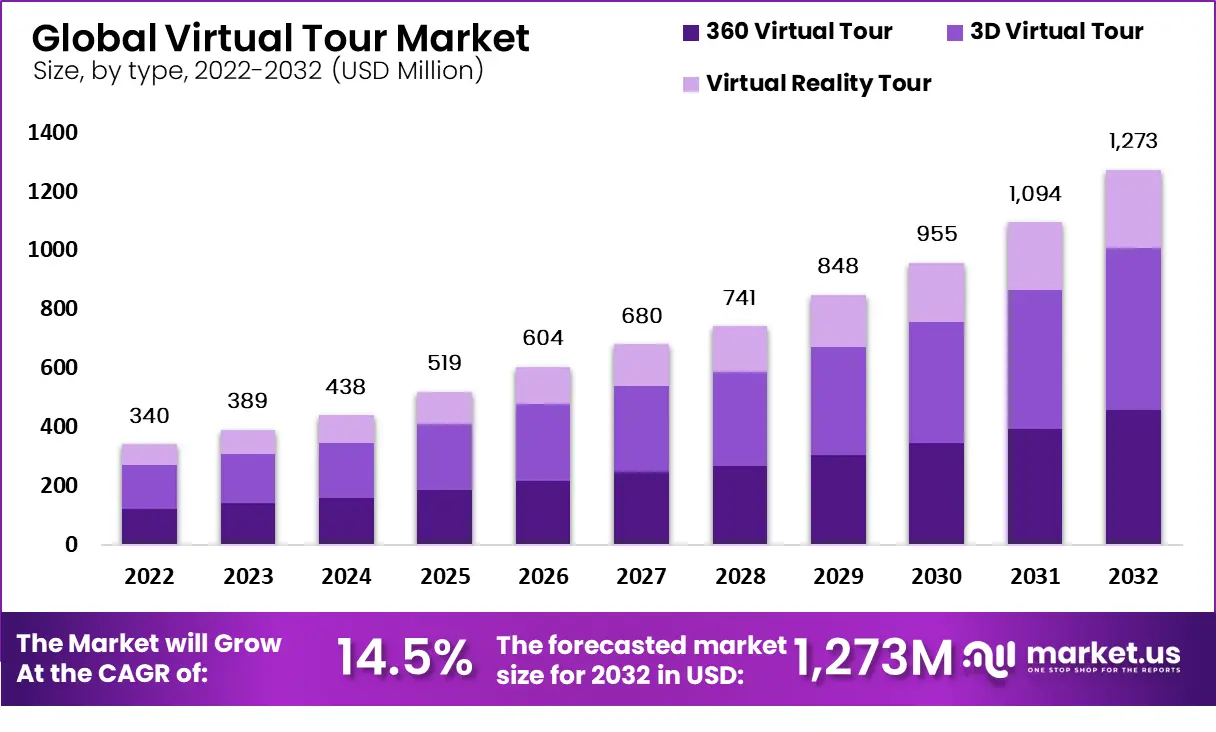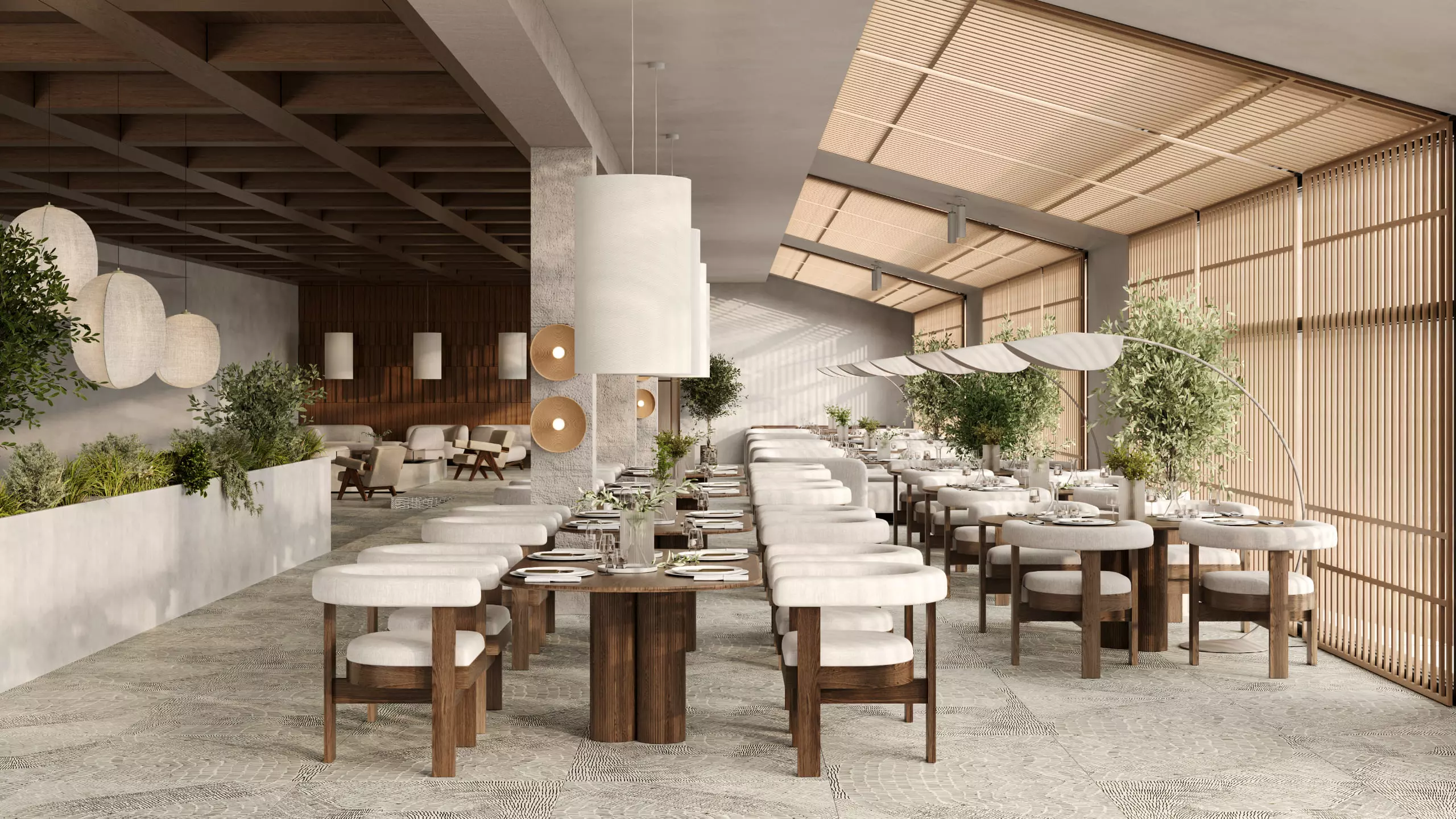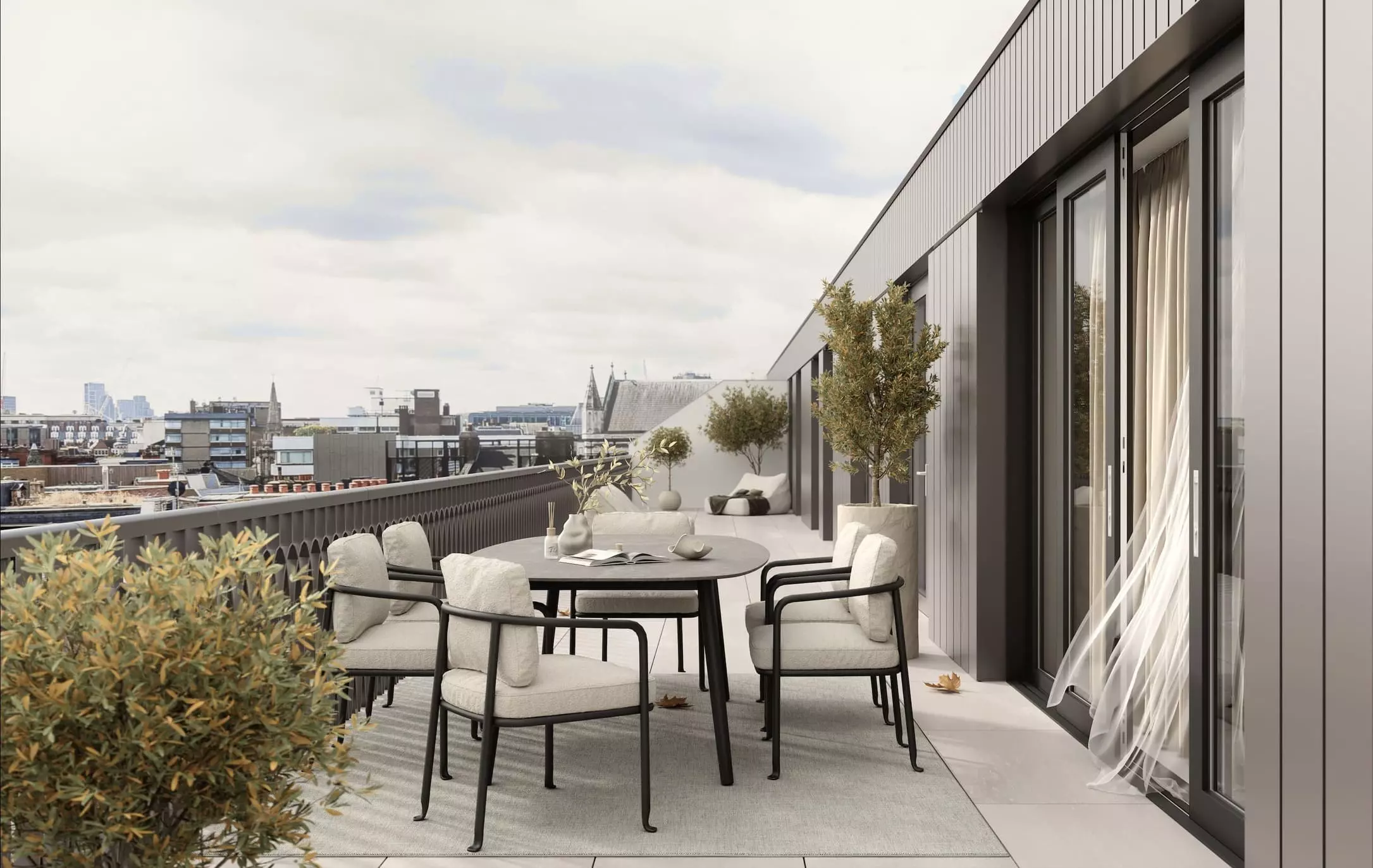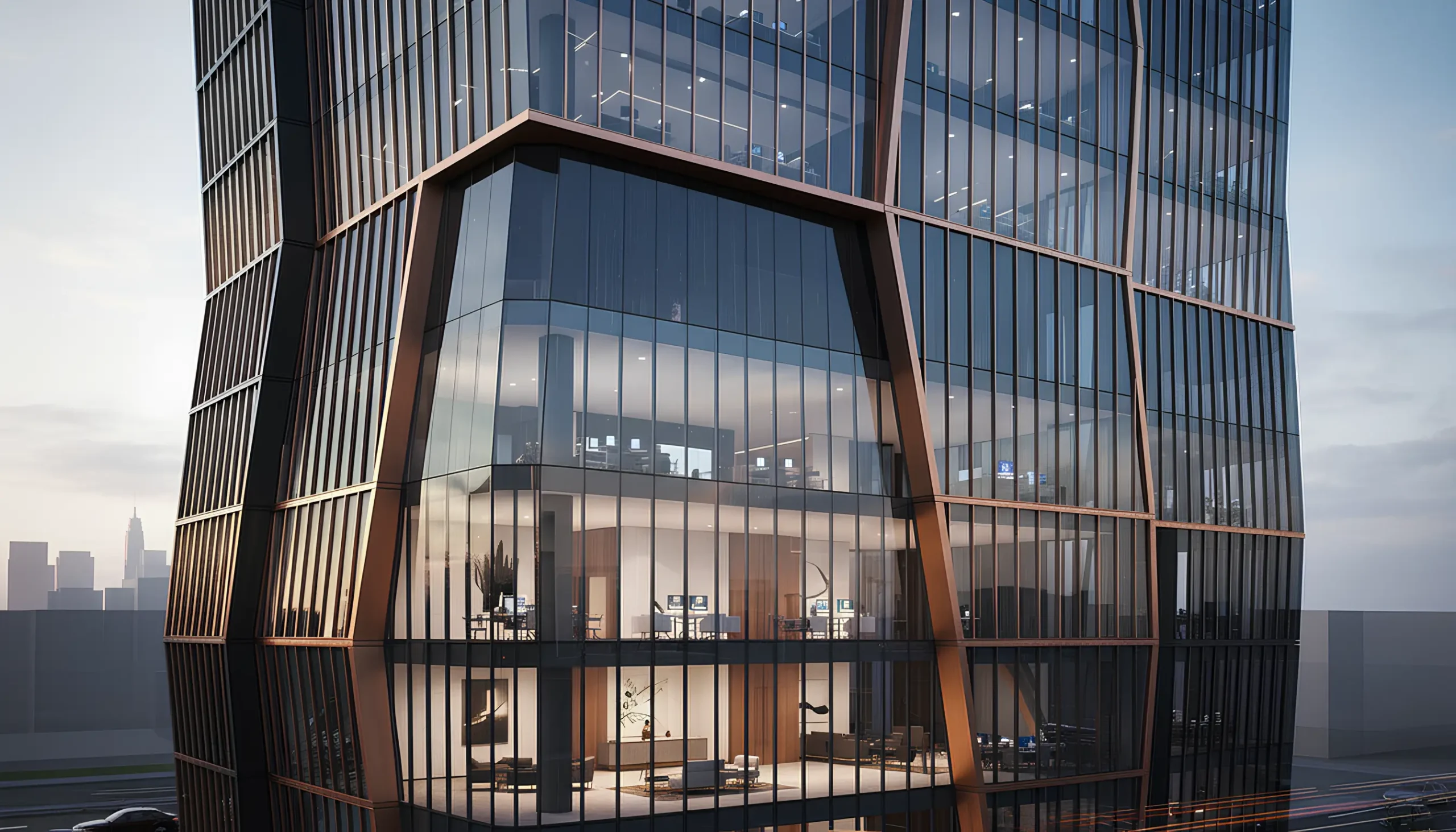Thanks to the evolution of technology in the real estate sector, a lot has changed since in-person viewings and listing pictures served as the primary form of showcasing houses to potential buyers. According to Market analysts, the virtual tour real estate market reached $340 million in 2022 and is expanding with a CAGR of 14.5%. Thus, the industry’s capitalization will cross the $1.2 billion mark in just 10 years by 2032.

So, the future of real estate in 2025 focuses more on a digital approach rather than a traditional one. Realtors can now provide buyers with digital walkthrough tours, benefitting them even more within a competitive marketplace.
The ability for buyers to have access to 360 interactive 3D renderings and tours and 3D images has enabled the industry to evolve completely. Buyers are not only limited to seeing pictures or reading texts about the house but are now able to visualize themselves walking through the house with a virtual tour. Incorporating higher-quality visuals and upgrading to interactive features has the possibility of completely changing the outcome and adding more atmosphere.
Not only do these strategies help realtors remain up-to-date with the market, but they also allow potential buyers from any area to go on an interactive tour without the need for a realtor.
Using 3D renderings for better visuals
3D graphics have changed the way real estate properties are marketed. There are other important aspects to great 3D real estate renderings, which also are great for marketing, including lighting, textures, and multiple angles visualization of reality. Now, not only can one appreciate the layout of the property, how each room connects, and how light flows throughout the space, but all other details, including textures, which photographs cannot capture well. Real estate 3D rendering essentially animates the object and gives a prospective buyer a better view of things before he comes to inspect the place.
In order to choose the appropriate 3D visualization software, several factors must be examined.
- Identify features that provide realistic textures and lighting effects while specializing in real estate 3D renders.
- Some applications also make alterations easy, which is critical to personalizing services for individual clients.
- It will be important to invest in a software that allows creation of quality real estate 3D visualizations because this will improve your chances of succeeding in a competitive real estate market that constantly demands high speed work.
The integration of augmented and virtual reality in real estate tours
Augmented reality and virtual reality are the next steps in improving real estate tours. Both technologies are more engaging and interactive, which can really reconfigure how clients see properties. With the help of VR, clients are able to see amazing real estate renderings and go for virtual real estate tours of properties as if they are present in the house, as in 3D. On the other hand, AR can be applied when combining digital elements in an actual space. For instance, a prospective buyer can see with an AR app how a piece of furniture would fit in a room or how a renovation would transform the space.
AR and VR bring added value for the clients as they are able to experience the property in different ways. It’s like going beyond the standard walkthrough and offering a full sensory experience. There are several AR and VR-focused companies in the industry today that specifically deal with real estate aspects, such as Matterport and Zillow 3D Home. These applications are specifically designed to assist realtors in creating captivating tours with an immersive experience and features that would attract buyers.
Improving tours with personalization choices and interactive floor plans
Another way of improvement that you might want to consider is the enhancement of online renderings for real estate and tours by adding interactive floor plans. These tools enable prospective clients to obtain information not only about the room arrangements but also about specific features of the property they are designing. For example, users have the ability to traverse rooms and reconfigure them as they want, including changing the color of walls or placing items of furniture. Such visualization of the property ensures that the potential clients form an emotional attachment to the property.
The level of customization can extend to changing the finishing accents of the house and visualizing how any area will appear. Giving buyers such a level of interactivity is good for arousing interest as well as making them feel more in control of the experience. Some features to include in interactive floor plans are:
- Make changes in the size of the room.
- Modify the position and styles of the furniture.
- Choose the shade for the walls or the floor.
- Make arrangements for adding or removing any features such as design decor or lights.
- Select particular options viewing the other structure or changes made by renovations in the property.
Leveraging drone footage for comprehensive property views
Indeed, one of the hottest trends in real estate tours today is aerial videos, which enable the clients to have an all-around view of the property. Aerial videos have many advantages, as one can see the angles that normal pictures or videos cannot reach. 3D rendering for realtors is a pretty helpful tool: realtors can display large tracts of land properties, specific structural details of pieces of land, and the entire neighborhood. From a plush apartment with a sprawling backyard to a fancy home with a wide view, aerial videos are able to record everything.
The introduction of drone videos in your real estate tours is an added advantage. It is worth ensuring that all the best practices have been followed, including the important parts of the property like front and back yards, pool areas, or other amenities that are uniquely available on the property. The resulting video footage should look seamless and beautifully polished, effectively showcasing all important aspects of the property itself, making it feel more inviting. This added aspect is likely to make your real estate tours more unique and allow the prospective purchasers to have a full view of what the property is like.
AI-powered personalization and automation
The use of artificial intelligence technology is seen now only when we talk about high quality real estate renderings. It is now becoming influential in real estate businesses, especially with regard to the personalization and automation of interaction with clientele. AI-powered tools have the ability to suggest listings to buyers by considering their searches and even their actions during virtual tours and such recommendations. Perfecting this aspect enables realtors to provide targeted tours to clients, enabling them to be more interested in buying the property in the end.
Buyers and agents alike have greatly benefited from these innovations as well. Automation plays a part in fully implementing or streamlining such processes. For example, after a tour, automated reminders make it possible to maintain the interest of would-be buyers without the need for excessive effort.
It can also help in crafting the content for the tour so that everybody sees something different each time. Buyers get the most suited property options, alerts on the price of properties that they have shown interest in, and other similar properties that meet their search parameters and algorithms set to get the thumbs up from them.
Wrapping up
Expect that as early as 2025, integrating digital solutions to your real estate tours will be required, not just recommended. There are already many technologies that can display and view properties, such as 3D models and images, AR and VR technologies and images made by drones, and artificial intelligence personalization. For that, realtors who will be the early adopters of these technologies and tools will not only be a hit, but they will also provide interactive and automated experiences that will surely engage and hold on to their clients.
Augmenting these innovations allows realtors to enhance their property marketing while allowing clients to engage with the property of their dreams in the most realistic way. The era of virtual tours and 3D models of properties is upon us, and it is focused on creating rich, interactive and personalized experiences for the clients who get to decide how they want the tours to go. Don’t get left behind, and make the first moves in transforming your real estate tours! Genense 3d rendering studio professionals can help you with that.








